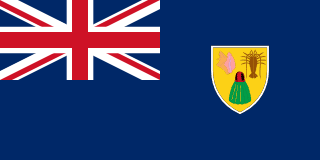Turks and Caicos Islands - Environment

As far as the environment of Turks and Caicos Islands is concerned, there have been . As for nvironment - international agreements, we have; .
About the environment of Turks and Caicos Islands
| Climate | We have subtropical to temperate; substantial rainfall in the eastern portions, becoming semiarid in the far west |
|---|---|
| Revenue from forest resources | |
| Revenue from coal | |
| Waste and recycling | Municipal solid waste generated annually: 1.819 million tons (2024 est.) |
| Total renewable water resources | 387.77 billion cubic meters (2022 est.) |
| Major rivers (by length in km) | |
| Total water withdrawal | |
| Municipal | 362 million cubic meters (2022 est.) |
| Industrial | 154 million cubic meters (2022 est.) |
| Agricultural | 1.897 billion cubic meters (2022 est.) |
| Land Use | |
| Agricultural land | 54.1% (2023 est.) |
| Agricultural land: arable land | arable land: 11.5% (2023 est.) |
| Agricultural land: permanent crops | permanent crops: 0.2% (2023 est.) |
| Agricultural land: permanent pasture | permanent pasture: 42.4% (2023 est.) |
| Forest | 36.9% (2023 est.) |
| Other | 7% (2023 est.) |
| Urbanization | |
| Urban population | 63.1% of total population (2023) |
| Rate of urbanization | 1.64% annual rate of change (2020-25 est.) |
| Major urban areas (Pop) | 3.511 million ASUNCION (capital) (2023). |
All Important Facts about Turks and Caicos Islands
Want to know more about Turks and Caicos Islands? Check all different factbooks for Turks and Caicos Islands below.
-
 Turks and Caicos Islands Factbook
Turks and Caicos Islands Factbook
-
 The Economy of Turks and Caicos Islands
The Economy of Turks and Caicos Islands
-
 Learn about the Government of Turks and Caicos Islands
Learn about the Government of Turks and Caicos Islands
-
 Communication in Turks and Caicos Islands
Communication in Turks and Caicos Islands
-
 Popular Universities in Turks and Caicos Islands
Popular Universities in Turks and Caicos Islands
-
 Enerny in Turks and Caicos Islands
Enerny in Turks and Caicos Islands
-
 Transport in Turks and Caicos Islands
Transport in Turks and Caicos Islands
-
 The Geography and society of Turks and Caicos Islands
The Geography and society of Turks and Caicos Islands
-
 The Environment of Turks and Caicos Islands
The Environment of Turks and Caicos Islands
-
 Military and security in Turks and Caicos Islands
Military and security in Turks and Caicos Islands